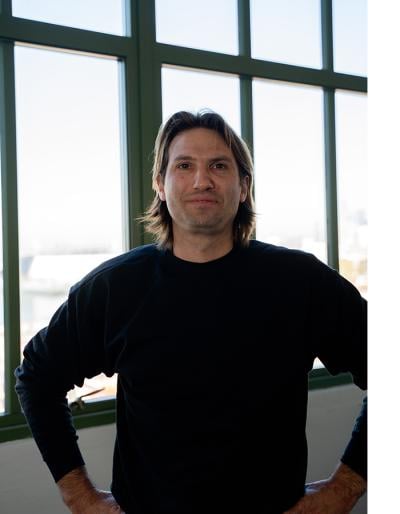Mar 18, 2024 12:44pm | By Hannah Kinnersley
Very often in the search for sustainable solutions in the live entertainment industry we focus on fixing the issue after the fact, for example, by planting trees to offset carbon emissions, or recycling items we used to throw away, like wristbands used by audiences. But the biggest problems the industry has to address in order to make it less of a carbon offender are power generation and trucking. Currently, most tours and large, live events use massive diesel generators and only have access to renewable energy if the venue has invested in solar power or is purchasing renewable power from the grid, and even then it often will not cover the energy consumption for the event. Carrying solar panels with a tour would only increase the number of diesel trucks required, canceling out any benefit. However, one US company potentially has the answer to this dilemma, and it is already an established force in other fields with clients ranging from the US State Department to the military.

Pvilion, a Brooklyn-based solar fabric manufacturer creates rigid portable structures that are self-powered, the solar panels are built into the fabric and feed into batteries, making it ideal to set up tents for refugees or military encampments. And because the panels are small and set into the waterproof and windproof material, they are unlikely to crack, can be replaced more easily than traditional solar panels, and allows the fabric to be folded up for easy transport. The state department is using Pvilion systems that pop up into a portable solar array to generate power for disaster relief, and the Air Force relies on Pvilion’s solar-power for a project in a remote part of Alaska.

Electrical engineer Colin Touhey is a founder at Pvilion, which has been around for 12 years. His business partners in the venture are engineers that design and manufacture tents—not the type you might take hiking, but the kind you find covering airport terminals and amphitheatres. By introducing renewable energy into the equation, the applications for this type of structure have multiplied, and recently the entertainment industry has taken notice.
Live Design talked to Colin Touhey about his work in this area, uses in the entertainment industry, and the potential for the future.
Live Design: You are an electrical engineer, what brought you to the tent industry?
Colin Touhey: The engineers at FTL Design Engineering (now Buro Happold) had been designing tents basically since the 1970s, when it was almost an artisanal process, you would build a circus tent and hope it didn’t fall down. The company basically brought the industry into the 21st century by introducing modeling, structural analysis, and a high-tech building sciences perspective to it. In fact, it helped write the building codes because in the US there wasn’t really a rating, you couldn’t say that a tent could withstand a 65 mile an hour wind according to a building code. It really brought the industry into the forefront and now it’s just exploded and the amount of square footage of tentage or fabric structures around the world is tremendous. I joined as an electrical engineer in the mid 2000s to integrate energy generation into the tents.
My background is in electrical engineering and I started out working with solar and wind, but basically any kind of electricity generation project was fascinating to me. I came on board as a team member and we spun off this part of the business into Pvilion.

LD: What makes your use of this material unique?
CT: We design structures that are self-reliant, they generate the most erate energy from the fabric which feeds into a battery that provides lighting, air conditioning, and heating. We can do fully off the grid or emergency power depending on the size of the project.
Since we started, the fabric for the surface of the tents has become more and more powerful and the energy consumption inside the tents got lower [because of energy efficient lighting etc] and so they have reached an equilibrium. Most of the time we can produce 100% of the power for almost all applications.
LD: There are obviously huge applications in terms of housing for refugees and medical tents or military encampments, but how can it be used for live entertainment projects?
CT: There are several ways. Most recently, on the Coldplay Music of the Spheres tour, we use the fabric to cover the seats behind the stage in each stadium so that during the day it generates solar energy which feeds into a battery which in turn helps to power the show at night. It is a large piece of fabric, not seat covers in a traditional sense, and is draped over the area and then folded up and taken to the next venue. There is no reason why the fabric can’t be used be used by the venue whenever the stadium is empty but it makes more sense to use it to cover the roof of arenas and stadiums permanently. It is a much easier and more cost-effective version of traditional solar panels and can be used if there is some movement in the roof, for example a roof on a sports venue. A lot of the time there are cantilevered dome structures where you have an open center and 50 or 100 meters sticking out over the seats. The roofs are all fabric, and it could be lightweight solar fabric covering this massive area without building anything new or taking space from anything else.
So instead of running a diesel generator 24/7 for days during set up for a show, we’re basically flipping that on its head and saying let’s charge some batteries during the same period of time while the fabric is just sitting there and not creating pollution, and then discharge the battery during the concert.
On the Coldplay tour, the fabric generated about 100 kilowatt hours per day and we powered back of house and under the stage, which was around fifty people working under lights with laptops and all sorts of audio equipment and other gear. We can provide our own batteries but we didn’t for Coldplay because the tour had already partnered with BMW to provide recycled batteries.

LD: Could you get to a point where you only use a generator for two hours while the artist is on stage?
CT: You could, but the opposite would be better: not using the diesel during the concert and just running a smaller diesel generator slowly, in tandem with a renewable energy source to charge larger batteries. In theory, what you should be doing is coming to the venue with charged batteries and that way you don’t actually have to bring diesel generator trucks at all. There isn’t just one solution, there are different combinations for a solution.
Currently, there isn’t a battery out there that could power the demands of a large rock concert, but we are making baby steps toward a combination of battery and grid, and cutting down on diesel generators until we can do without them.
LD: How robust is the solar fabric? Would stadiums invest in it?
CT: When we do an architectural project it has a 25-year warranty, it is waterproof, rated for 450 mile-per-hour winds and significant weight of snow. It’s the permanent fabric that you see on projects like the Denver airport or London’s Millennium Dome [now known as The O2, designed to last 10 years and still going strong with tourists walking over the top of it and rock bands and events taking place inside it]. Our fabric is incredibly tough, Teflon-coated fiberglass, and yet you can fold it up around the solar cells like an accordion and move it around easily. A typical area of folding might be half a meter by two meters, so it would easily fit on a truck for a concert tour.
LD: Can you give a couple of examples where the fabric is in use in the US?
CT: In terms of permanent installations, in Tallahassee, Florida, we have a project called the Capital Cascades Connector Bridge. It’s a pedestrian bridge that we, designed, engineered, and installed the solar fabric for so that it generates its own lighting. The fabric also generates power for a mile-and-a-half long park there. Our products is also on the North Beach Bandshell Amphitheatre in Miami and it is used to power the lighting for that.
For temporary structures, we are renting out our systems to power summer events from clean energy sources. We’ve also built a tent on the roof of Carnegie Hall for a black-tie gala event. For small scale projects, the fabric is incredibly useful to get into non-traditional spaces and when you don’t want the noise and smell. We’re working with a traveling opera organization that should be touring this summer. For these outdoor events, rather than renting a generator, you rent a battery and a solar tent.
LD: Has there been more interest in this product since the Coldplay tour?
CT: There is more interest at the moment, and some of that is because there is legislation coming that will make it a bit harder to use generators. In California they are already banning small gas generators and a lot of emissive gas products.
LD: The obvious application to me would be festivals like Burning Man.
CT: Yes, music festivals and temporary events in cities wold benefit.
In addition to generating renewable energy, we are very, very good at structurally engineering things that use the fabric in efficient, lightweight and super strong structures that are very minimalist. Just a few poles or supports can create an incredibly strong surface. They are real rugged systems and reliable because you can’t have the lights go out for 15,000 people. Typically, at large-scale events, you have generators and back up generators, our system is very reliable, so that would be the primary power source, but the backup would be an emergency generator, not one running full time.
The other benefit is, a battery provides very consistent and high-quality power, a generator provides quite low-quality, inconsistent power, so a battery is very good for communications equipment, satellite dishes, medical applications, and things like that. If you need lighting for surgery, you don’t want a flicker.
LD: Are you actively targeting the entertainment industry? Who owns the fabric for the Coldplay tour?
CT: It is a different business model because tours typically rent everything, so Coldplay rented from PRG. Each production is custom, so getting into the supply chain is really challenging. The fabric is in the PRG inventory now, it is possible it might go out on the road again.
To read the original article, click here.
 news + press
news + press
